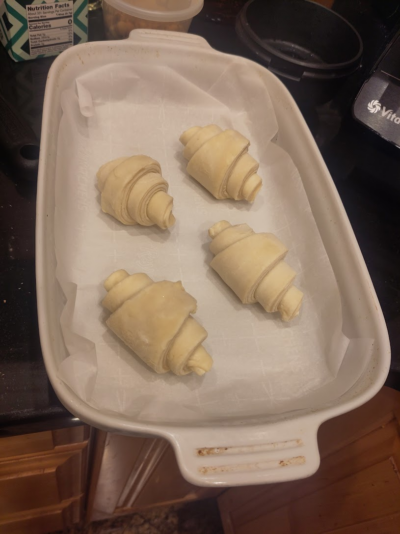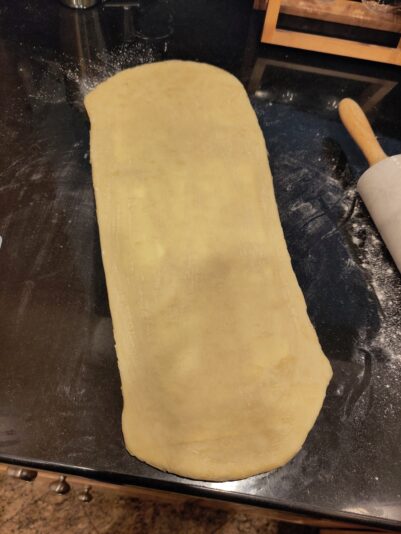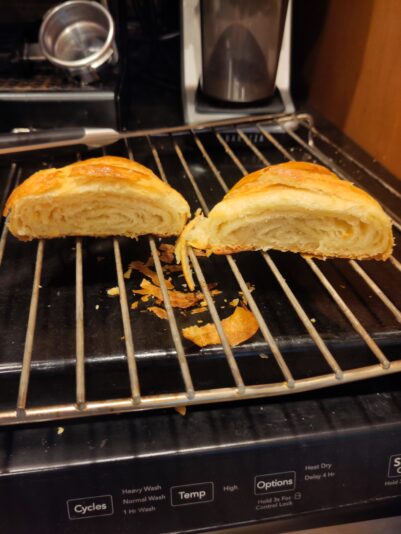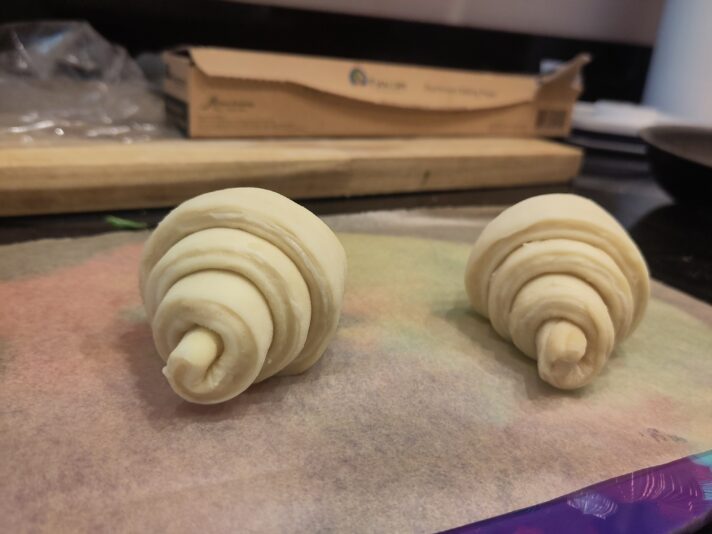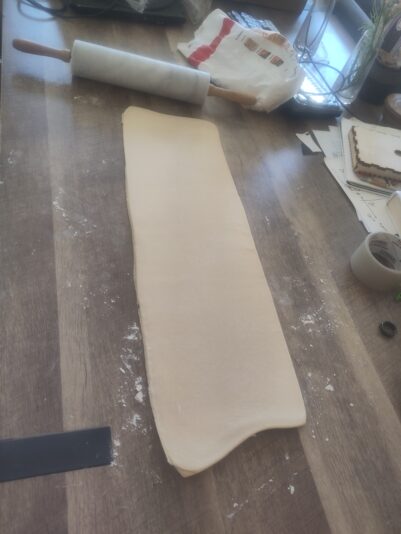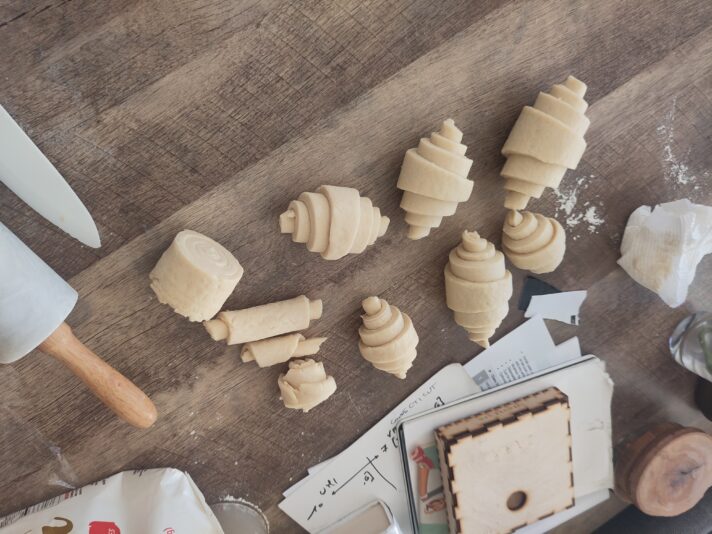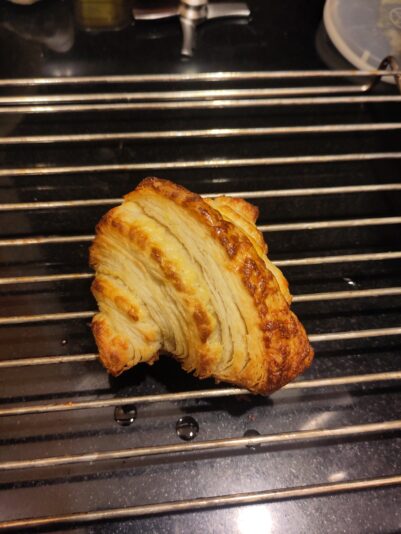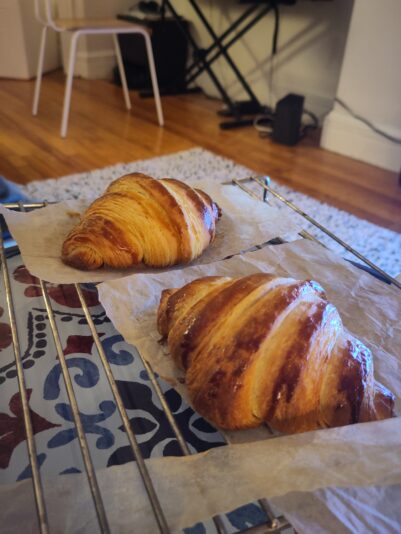-
Dense croissant problem
Hi,
I have done the recipe multiple times but still have one main issue which is dense inside. I have taken quite a few pictures you can see below of 4 batches and I’ll describe what I did everytime.
A few important details:
– I do not have a stand mixer so everytime I knead the dough by hand and in order to stay < 25C I put it back and forth in the freezer and knead in a frozen metal bowl as well. This ends up taking A LOT of time and it’s really hard since the dough is cold hand kneading it is really difficult. I just got a stand mixer for batch #5 to see if that’s the main problem.– I have a home made proofing box with temperature and humidity probes.
– Most of them were frozen after shaping and then proofed then baked.
– I typically do half of Bachour recipe so 675g dough and 250g butter
– I use mostly T45 flour and Plugra butter
1. (Images 1, 2) First try, everything seems quite fine. Proofing went a little wrong as the humidity went up to more than 90% and I didnt realize. When I took them out of the proofer and touch them they’re really wet and sticky. The outer most layer would basically stick to my finger and start peeling off . So I expected that humidity was the main problem. I also misunderstood how to thaw the shaped croissants after freezing. I used to do it in the fridge so I get that made them wet.
2.(Images 3,4,5,6) This time I changed recipe to Joshua Weissman just to see if that would help (especially since it’s without stand mixer). This time I mistook parchment paper and wax paper so the dough really dried overnight and cracked so I added some water to rehydrate before layering which went ok even though butter was too cold and didnt spread well. In the end they look better but still basically a brioche not a croissant inside. That recipe also kneads dough very little so maybe that doesnt help it rise.
3.(Images 7,8,9) Back to Bachour recipe and no freezing this time to check that. Unfortunately I messed up the layering and butter stuck to the table so I had to add a lot of flour to keep doing folds. On top of that I think I kneaded the dough more than before and rolling it was quite tough. And that’s why my final shaped croissants I think are really thick, because the final dough thickness was too much as I can’t roll it more. And that created that very weird detached layer we see I guess? The exterior’s really nice but once again inside is brioche. Also I had some butter leaking out during proofing so I should stop being too close to 28C and lower it.
4.(Image 10) This time I tried Kerrigold butter instead of Plugra and that was really hard since it becomes very soft. Main problem in this one is that the croissant dough is really dough to roll out.
Expected issues:
– Proofing: Looking at the size and remembering how “wobbly” they were I think most need more proofing time.– Dough: If I knead the dough until I have a window pane it’s really hard to roll the next day with the butter. So I’ll try to see what’s up with a stand mixer.
– Layering: Maybe I’m just messing up the layers and they merge somehow which is why I don’t have any?
Is there anything you see that I’m doing wrong? Please let me know!
The forum ‘Ask a question’ is closed to new discussions and replies.


